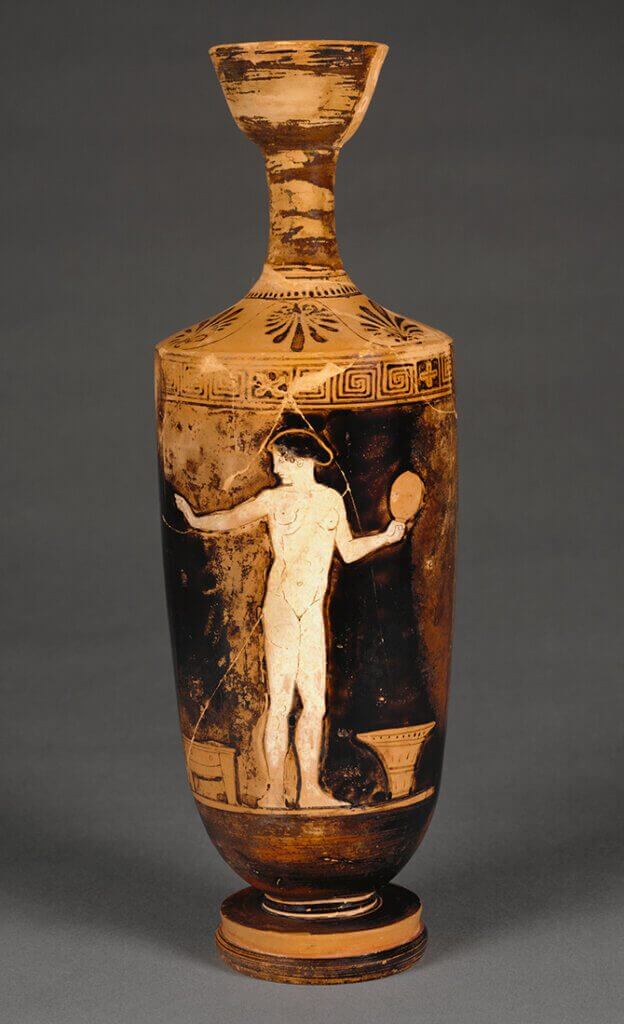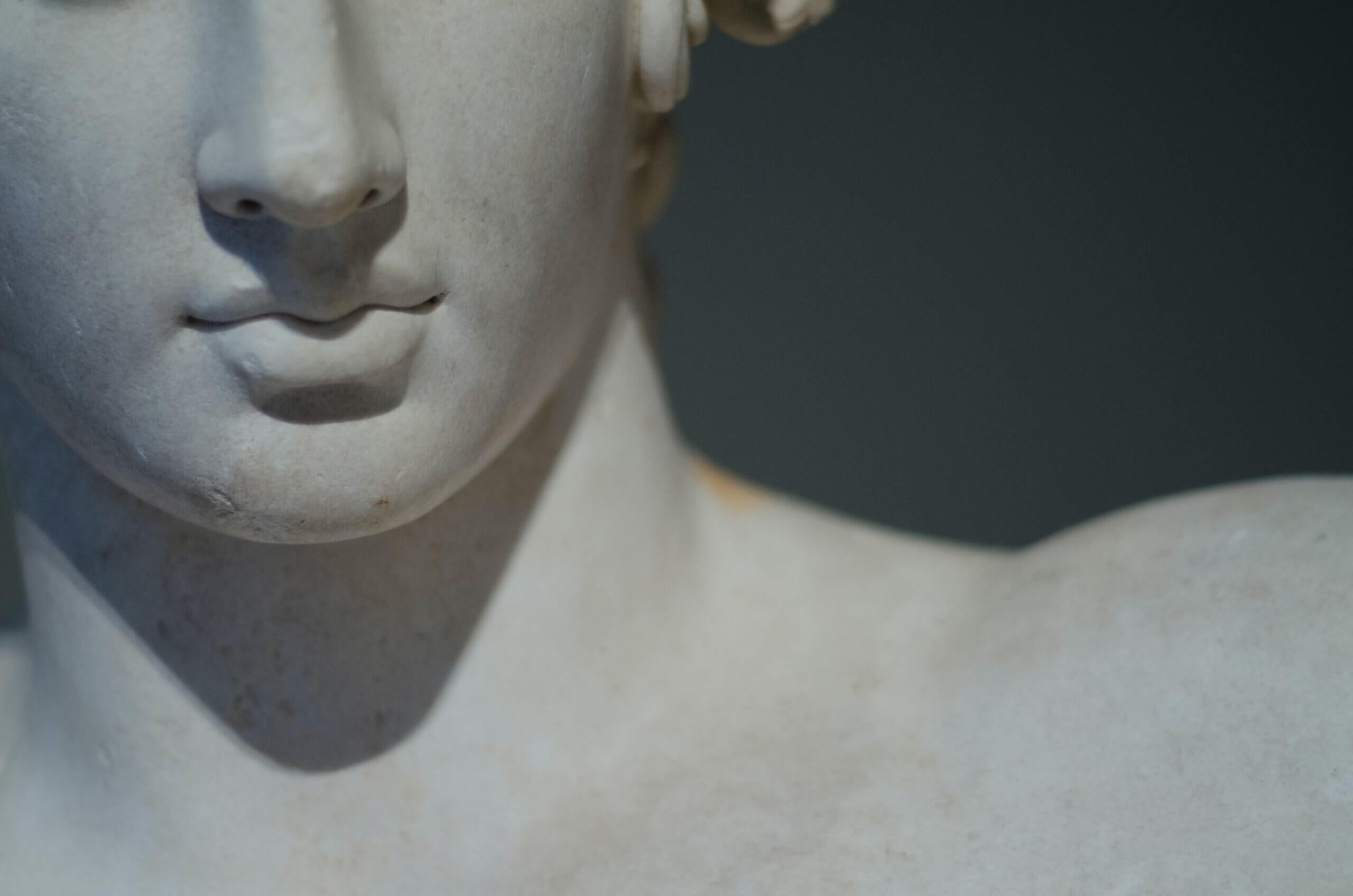A simple answer could be that the Greeks believed nudity was powerful, ideal, and beautiful. But like so many things from ancient life, there is no easy answer.
Greek art—including sculpture, vase paintings, drinking cups, frescoes, and mosaics—is known for depicting nudity, especially male nudes. According to Shelby Brown, senior education specialist at the Getty Villa Museum, “An idealized human male image was developed in Greek art that prized a slender, toned, ageless male body with a glorious six-pack and a neutral, ‘youthful’ face without wrinkles and expression.” Although desired proportions varied through time, this perfected male nude usually stood in balanced poses.

Attic Red-Figure Lekythos, about 450 B.C., Circle of Phiale Painter. Terracotta, 12 7/16 × 4 1/8 in. J. Paul Getty Museum, 86.AE.250
Nudity in Greek art was used symbolically to display heroes from myths, gods, warriors, or war heroes. “The ancient Greeks were selling a social agenda or normative culture by using nudity,” said Kenneth Lapatin, curator of antiquities at the Getty Villa Museum. “By presenting an idealized nude they were telling the rest of the world they were powerful.”
In sculpture, male nudes dominated until the 4th century B.C., when figures of Aphrodite broke the mold and introduced female nudity into monumental art. Before then, ancient Greek society kept female nudity limited, except when they were shown in captivity, submission, or at a small scale.

Statuette of Aphrodite Leaning on a Pillar, 250–200 B.C., Greek. Terracotta, 10 11/16 × 4 15/16 in. J. Paul Getty Museum, 55.AD.7

Lansdowne Herakles, about A.D. 125, Roman. Marble, 76 3/16 × 30 1/2 in. J. Paul Getty Museum, 70.AA.109
Romans also created nude sculptures and depicted nudes in their art, but it was less pervasive than in Greek art. Roman gods and goddesses and sometimes emperors were depicted naked in Roman art more often than regular people.
Ancient cultures like the Egyptians or Assyrians were more restrained about depicting nudity in art as there is little evidence of it in found artifacts.
However, there might not be so many nudes, after all. “If you look at how many Greek statues are nude across all museum collections, it’s not that many,” said Jens Daehner, associate curator of antiquities at the Getty Villa Museum. “So why do we focus on those that are nude? Could it be that our modern perceptions of nudity come into play?”
Daehner notes that perhaps it’s our modern morality that makes the nudes stand out. Visitors, especially school-aged children, are often struck by the nude statues at the Getty Villa. During school tours, kids giggle with their friends as they pass by a naked Venus or Hercules. Really, there is only one naked Greek statue (Victorious Youth) and a handful of Roman naked statues at the Villa even if they might dominate a visitor’s experience.
Although nudity was represented in art it didn’t mean ancient Greeks were running around naked. However, there were certain situations where they did disrobe including while exercising in a gymnasium or competing in an athletic competition. (There is more information about the naked Olympics here, which involved running, long-jumping, and wrestling all in the buff.)
Next time you’re at the Villa with the kids or happen to see kids, or even adults, giggling you can now, to some degree, explain why the sculptures are standing so proudly while baring it all.





























